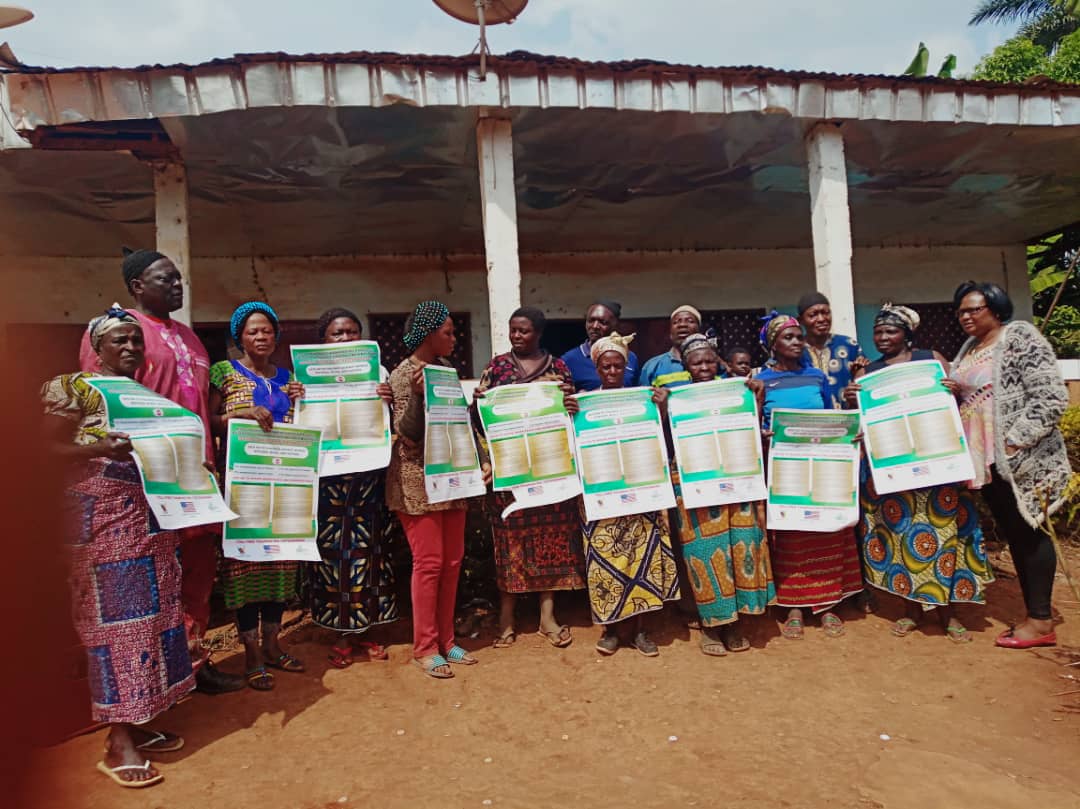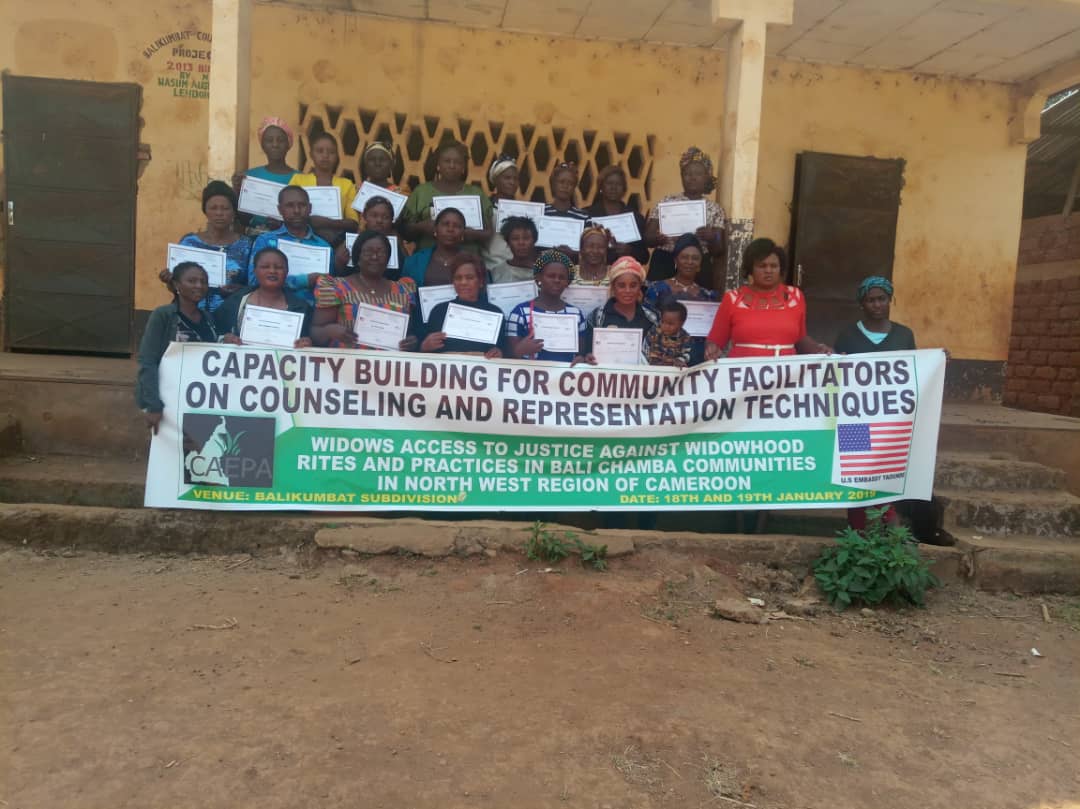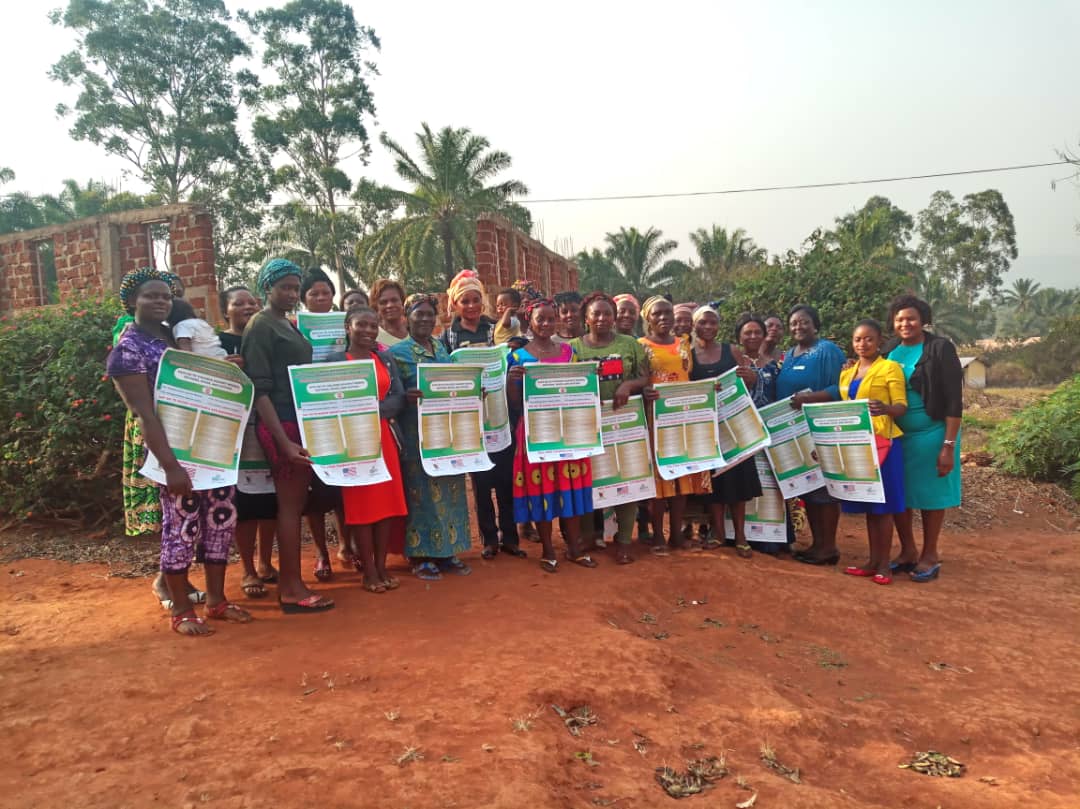Widowhood Rituals and Practices in the Bali Chamba Communities of the North-West Cameroon Region
Apr 13, 2020
Story




CAEPA conducted a survey of 190 widows and 10 traditional council members in the Bali Chamba villages of Cameroon's north-west region. The widow survey participants came from the following villages: Baligansin (30), Baligashu (40), Balikumbat (80), and Balighasu (40). CAEPA administered a questionnaire which asked for participants' age, number of children, participation in widowhood rites, duration of ritual (for both females and males), widow and property inheritance, as well as what their thoughts were on the abolition of such practices. Out of 190 widows surveyed, all 100% stated they had undergone widowhood rituals. The ages of the participants ranged from 22 to 88, depending on the village. While it was observed that widowhood practices followed similar rituals across the villages surveyed, there were significant variations in the duration and widow inheritance In the village of Baligansin, for instance, 30 widows had a total of 188 children. Duration of widowhood rites was about 2 months on average. One-third (10 out of 30) of the widows had been inherited - married to a deceased husband's relation. When asked about ritual abolition, only 7 out of 30 (23%) stated they would support it. No widow from this village inherited property. In contrast, the village of Baligashu had 40 widow participants, also with 188 children in total. While the ritual duration varied from 3 days to 3 months, this village saw zero widow inheritance, had 100% support (40 out of 40 participants) for complete ritual abolition, and half (20 out of 20 participants) inherited the deceased husband's property. The village of Balikumbat had the largest participant size of 80 widows, with 389 children in total. The average ritual duration was 3 days to 1 week - a statistic that can be attributed to the fact that Blikumbat is a warring community and men could be asked to join a fight at any time. Much like the widows from the village of Baligashu, more than half (56%) of the Balikumbat widows survey stated they inherited the deceased husband's property, but only 26% (21 out of 80) were supportive of complete ritual abolition. It is important to note that the widowhood institution is a well organised and established aspect of the community, which has survived cultural extinction, despite its repugnant and degrading nature. Lastly, the village of Balighasu had the shortest average ritual duration of only 3 days, had 14 of 40 (35%) widows inherited by the deceased husband's relation, saw 7 out of 40 (18%) widows be in support of complete ritual abolition, and had 4 out of 40 (10%) widows with inherited property. Out of 10 traditional council members surveyed, only 3 were in support of complete ritual abolition. They all shared the same views on how widowhood rites should be executed (see below). All 10 participants, however, agreed that certain changes in effort to shorten the ritual duration should be made. Lastly, it was observed that in all Bali Chamba villages surveyed, widowed men only spent 1 days undergoing widowhood rituals.
What does a widowhood ritual in the Bali Chamba villages entail? Across the communities surveyed by CAEPA, it was observed that widowhood practices followed similar rituals. Deeply rooted in ancient tradition, this meant for widows to be stripped off their clothes, bodily hair removed (typically by means of shaving), sleeping on plantain leaves or on a bed made of bamboo, and being allowed to bathe in a stream once a week, until the cleansing ritual has been completed. Some communities allowed widows to cover their exposed private parts with a white loincloth. Other may allow for a thin white garment to be worn. All hair is removed from the widow's body, including the hair on her head, eyebrows, arms, legs, and the pubic area. The widow has to sits with legs stretched out and her hands stretched open on her legs. She eats from a calabash and drinks from another calabash which is washed once a week. She eats without washing of hands, as basic hygiene is neglected.
Solution: Women and widows in particular should attend adult literacy classes, seminars, and training programmes offered to them by the state, religious bodies, and nongovernmental organizations such as CAEPA Cameroon. In addition to education and vocational training, women must be aware on their basic human rights (women's rights) and to educate themselves on where to go for help.This can be done through the establishment of victim telephone hotlines, community support groups, community workshops, mentoring, peer-to-peer tutoring, and more. This would enable the widows with a safe and judgement-free environment in which to share experiences, seek support, offer advice, acquire new skills and ideas. It would provide them with a path to community reintegration, independence, and self-sustainment. Receiving education will also provide access to better-paid jobs and financial security.
https://youtu.be/DgH7IBrzdpo




